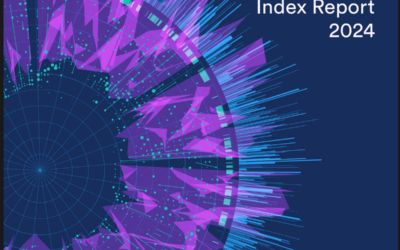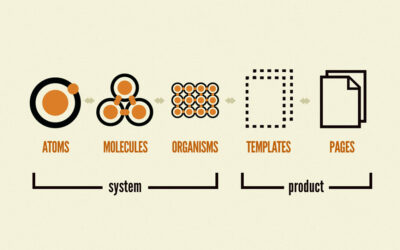A SECTION 508 ELEARNING SUCCESS STORY
The most recent GSA report highlights a need for more success stories regarding Section 508 compliance in the federal government.
“Overall compliance to Section 508 is well below expectations given the federal government has had over 20 years to implement programs capable of achieving and maintaining modern ICT standards. More than 75% of respondents are at or below average with respect to Section 508 compliance.”
Unfortunately, the GSA completely overlooked the successes the U.S. Department of Agriculture achieved.
The USDA is a Section 508 eLearning Success Story
The USDA is dedicated to accessibility and Section 508 compliance – and did something to enable compliance across the entire agency.

The USDA has created and published over 2,000 Section 508 & SCORM conformant e-learning titles…with zero accessibility issues reported from a learner population of over 125,000 individuals. The vast majority of the courses were developed by USDA personnel – most of whom had not created eLearning before.
So how did hundreds of people with little to no technical knowledge about Section 508 compliance and limited experience building eLearning courseware accomplish this?
Short answer: they stopped using linear authoring tools that force the author to become an accessibility expert to create a course.
What does that mean?
Popular legacy authoring tools enable Section 508 compliance by forcing the course creator to first become an expert in Section 508 compliance.
Then, the “author” must apply all their newly found encyclopedic accessibility know-how to every course, every piece of text, heading, media item, interaction, question, and answer on every page.
Sound difficult? Yes, it is, and that’s why the legacy author model cannot and will not scale when producing Section 508-compliant eLearning.

Aside from the ever-present Section 508 compliance issues, another bottleneck is created because other platforms rely on an individual author to do everything. Building courseware requires many disciplines working together. Funneling all instructional design, content, assessment questions, media development, AND accessibility through one “author” is amazingly limiting.
The USDA realized that relying on a single “author” to be a subject-matter expert, accessibility expert, graphic designer, video producer, etc., is “technically possible but practically impossible.”
Using this approach, in theory, everyone ‘has the ability’ to “create” Section 508 compliant e-learning the same way anyone who owns a chisel can create Michelangelo’s David from a raw lump of stone.
CHANGE THE WAY ACCESSIBLE ELEARNING IS CREATED
Instead of hoping everyone will become accessibility “experts,” the USDA used CourseAvenue – an elearning authoring platform developed from the ground up to enable Section 508-compliant education.
CourseAvenue uses a system of pre-validated Section 508-compliant building blocks to assemble courseware. These building blocks include common elements such as text, graphics, hyperlinks, knowledge checks, scores, assessments, surveys, audio, video, branching, and other standard and definable “interactions.”
By using this approach, Section 508 Compliance is built-in to every course, out of the box.
Create Accessible e-Learning at Scale
In CourseAvenue, as users add their content, an integrated “Accessibility Analysis” tool can constantly analyze and alert the author if content has been added that may result in downstream accessibility issues. This way, Section 508 compliance is part of the standard course development process.
This approach starkly contrasts most authoring tools where a user is first made aware of a Section 508 violation during a formal Section 508 audit.
Plus, if you build a course using CourseAvenue and get “flagged” for a Section 508 violation (which seldom happens) during an audit – the CourseAvenue support team will work with you (and the reviewer) until the issues are resolved. No extra cost. It’s that easy. No more expensive remediation.
COLLABORATION ELIMINATES THE CONTENT BOTTLENECK
CourseAvenue uses a modern, HTML5, multi-user Editor, so authors can focus on meeting the instructional requirements of their courses. Using CourseAvenue’s collaborative elearning authoring platform allows everyone – not just “the author” – to participate and edit content — preventing the content “bottleneck” and eliminating the limitations imposed on creativity and design by the complexities of programming for assistive technology.
In this team-based model, instructional designers can actually design the structure of the course.
The instructional designer can focus on essential questions such as:
-
Where should knowledge checks be? How many?
-
Are the course objectives being met in the content?
-
What type of learner feedback is best for this type of learning?
Subject matter experts can be invited to the team and directly add their content to the course structure as defined by the instructional designer. In the same way, graphic designers and media professionals can focus on creating supporting imagery and media to make the course effective.
Working with contractors? Sure, they can also be added to the team.
Don’t have or need a “team”? That’s fine. One “knowledge expert” can use CourseAvenue to produce highly effective educational content without being an accessibility expert.
Leveraging a platform built to produce Section 508-compliant eLearning while enabling teams of people to work together. This is how USDA has been so successful! This is how the USDA has become a Section 508 eLearning Success Story!
CREATE INCLUSIVE AND ACCESSIBLE E-LEARNING AT SCALE!
Creating Section 508-compliant and accessible eLearning at scale using linear authoring tools is practically impossible. Requiring that anyone building (or maintaining) a course first become an accessibility expert is a huge barrier. The limitations imposed on creativity and design, along with the complexities of programming for assistive technology, are nearly impossible to manage at scale because all the responsibility falls on one person’s shoulders.
CourseAvenue solves this problem. With CourseAvenue, eLearning teams can overcome accessibility barriers and ensure that their eLearning content is inclusive for all learners – through collaboration.
REQUEST A DEMO AND SEE FOR YOURSELF
CourseAvenue can help you prioritize your enterprise eLearning efforts for the best and most significant impact. Spend about one hour with CourseAvenue and learn how:
-
The USDA published more than 2000 Section 508 & SCORM conformant eLearning titles…with zero accessibility issues reported.
-
To transform a subject matter expert into a course creator.
-
Create accessible e-learning at scale – out of the box!
Want to learn more? Get in touch today!




